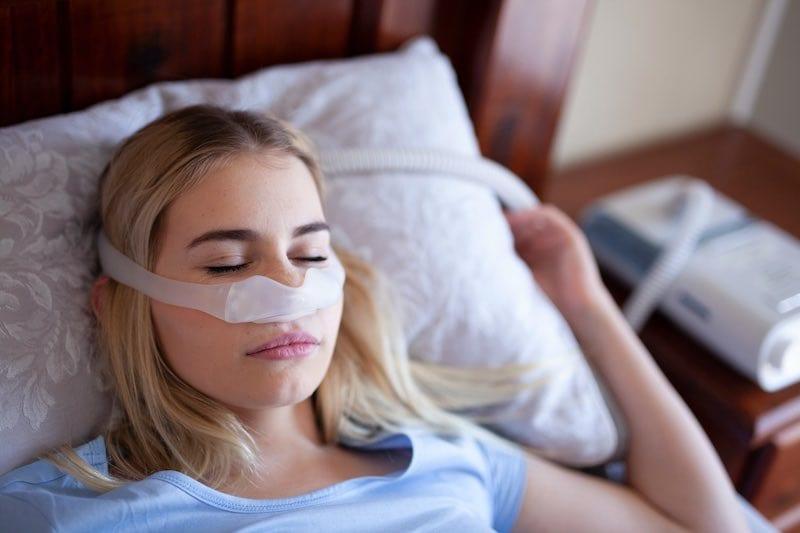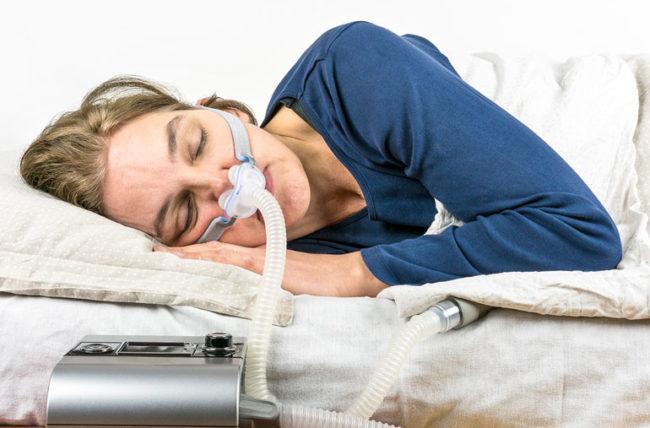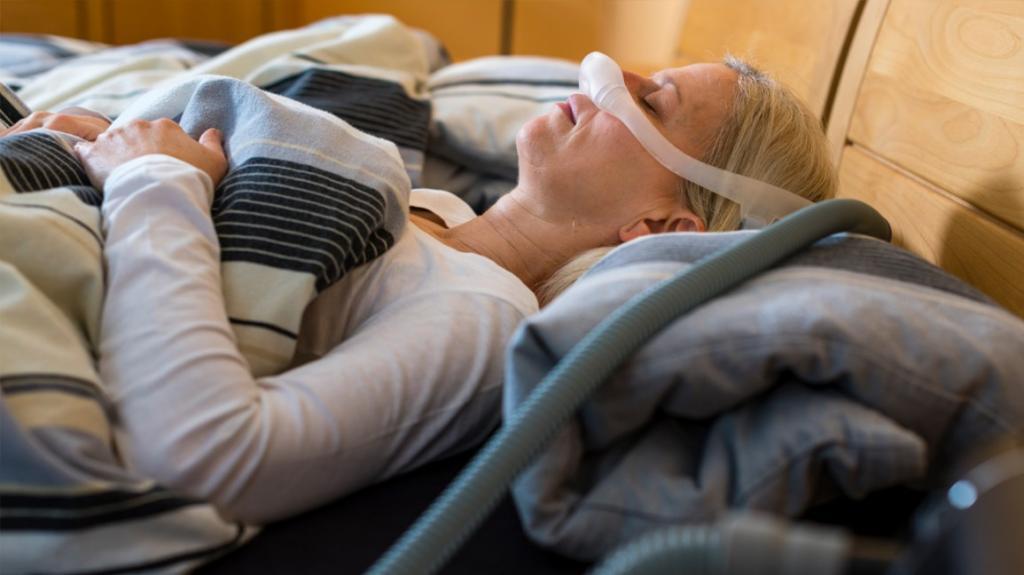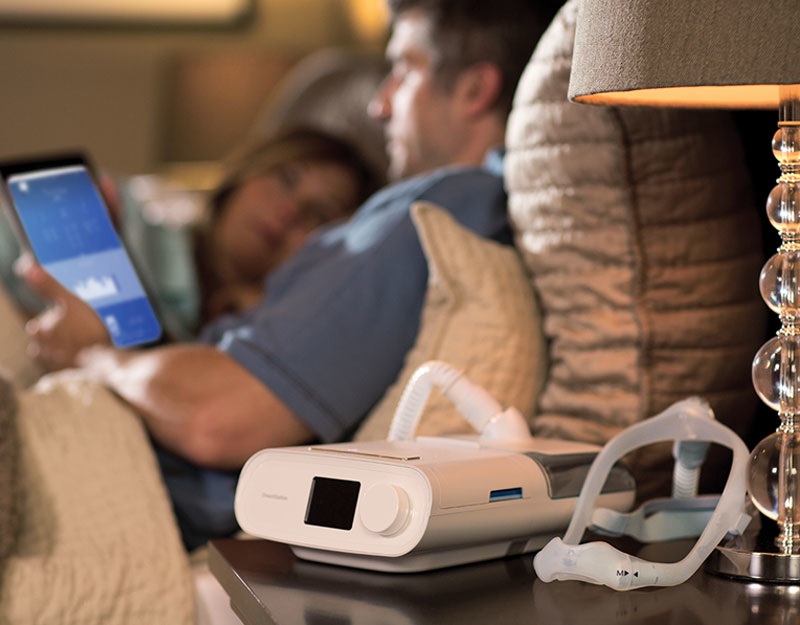The upper airway is partially or completely blocked during sleep, leading to snoring, gasping, or even choking in people with obstructive sleep apnea. Obstructive sleep apnea affects 2 percent to 9 percent of the adult population. If you’re one of them, you may benefit from using a CPAP machine.
As you sleep, a CPAP (continuous positive airway pressure) machine sits next to your bed. When you wear a mask that covers your nose or mouth, the machine delivers pressured air to keep your airway open while you sleep. You should use your CPAP machine every night after you’ve been prescribed it by your doctor.
However, CPAP therapy is both effective and expensive. CPAP machines can cost anywhere from $250 to more than $1000, not including the cost of filters and masks. If you’re thinking about starting CPAP therapy, you may ask if your insurance plan will cover some of the expense.
We’ll go over some of the most typical CPAP-related insurance packages. ‘ Check with your insurance provider for the most up-to-date information regarding these policies.
Does Insurance Cover CPAP Equipment?
CPAP devices and other equipment are often covered in part by most insurance policies. In many cases, the machines themselves are covered, but you may have to pay for other components, including tubing. It’s not uncommon for replacement components to be covered, but only up to a certain number per year. You may have to meet your deductible before your insurance company would cover your CPAP equipment, depending on your policy.

Your apnea-hypopnea index (AHI) is often taken into account by insurance providers when deciding whether or not you are eligible for CPAP treatment. The average number of times per hour that you suffer a partial or total halt of breathing is known as your AHI. A sleep study in a sleep lab or at home utilizing at-home testing equipment is the only way to assess your AHI.
The severity of a person’s sleep apnea is determined by their AHI reading. AHIs of 5 to 15 are regarded mild, those of 15 to 30 are considered moderate, and those of 30 or more are deemed severe. CPAP machines for all three AHI indices are partially covered by Medicaid and Medicare if you fulfill certain requirements. It’s possible that other insurance companies have different requirements. Check your insurance policy to be sure you have all the coverage you need.
Insurance Compliance and Prescription Requirements
Two conditions must be met before most insurance companies will cover the cost of your CPAP machine. For starters, you will need a prescription from your doctor for CPAP treatment. Second, you must demonstrate that you are utilizing the CPAP machine on a regular basis by completing a compliance period.
[amazon bestseller=”Cover CPAP Equipment”]
To get a prescription for a CPAP machine, your doctor must be sure that your sleep problems are caused by sleep apnea and not some other ailment, such as snoring. Obstructive sleep apnea is characterized by the following symptoms:
- Snoring that lasted all night long.
- Snorting or gasping when sleeping
- Sleepiness throughout the daylight
- Forgetfulness
- Headaches
- Being drowsy or falling asleep at the wheel
The next step is to get a sleep study done if your symptoms suggest that you may have obstructive sleep apnea. In-lab polysomnography or an at-home sleep study are two options for diagnosing sleep apnea for doctors. Your doctor may diagnose you with sleep apnea after reviewing and interpreting the results of your sleep study and working with you to build a treatment plan.
Medicare and Medicaid (CMS) demand proof that you are utilizing a CPAP machine for at least four hours every night on 70% of the nights in a 30-day period to be eligible for funding. Most devices keep track of how much time you spend using them, and you don’t have to do anything. Some machines transmit consumption data via an app on your phone, while others use an SD card reader to do so. If you don’t meet these conditions in the first three months, you may have to start the procedure over again.
Each CPAP provider has their own set of standards, however these are the most typical prescription and compliance guidelines. If you’re not sure what your insurance company’s criteria are, check out your policy.
Insurance and CPAP Machines
Your provider determines the specifics of your CPAP machine insurance coverage. When it comes to acquiring a machine, some providers cover the full cost, while others require that you use the unit for a predetermined period of time before it becomes yours.
Machines can cost anywhere from $250 to $1,000 or more to buy outright, depending on your location and the sort of equipment you want. Costs for most CPAP machines range from $500 to $800. It’s common for BiPAP machines, which deliver a distinct level of air pressure for exhalation and inhalation, to cost thousands of dollars
Rent-to-own plans normally include a monthly fee equal to the CPAP machine’s purchase price divided by the number of months remaining on your lease. Depending on your insurance policy, you may have to pay some or all of this expense. Keep in mind that if you have to rent for more than a year, you may be compelled to pay additional fees.
It’s possible that your insurance provider will stop paying for the machine rental if they discover that you aren’t utilizing it as much as you should be. Decide whether you want to pay the monthly rental fee, buy the equipment outright, or quit CPAP therapy.
CPAP treatment may require you to re-qualify for insurance coverage if you decide to stop treatment and then wish to resume it at a later date. In order to get a new prescription for CPAP, a new sleep study must be performed to get a new diagnosis of apnea. Your insurance plan and accompanying deductible will have an impact on the costs of any required doctor’s appointments or sleep studies.

Insurance and CPAP Supplies
The CPAP machine is the most expensive upfront investment in CPAP therapy. Then there are the consumables that wear out over time, such as:
- Masks
- Components of a mask
- Tubing
- Filters
- Braces for the chin
- Headgear
- a tank of water
Each component’s price varies. Changing filters on a regular basis might cost anywhere from $5 to $30. Masks can cost up to $100, while other necessities can cost anywhere from $20 to $100. When comparing the costs of owning outright versus purchasing insurance, keep in mind that some rental plans may include the cost of replacement equipment.
When it comes to equipment replacement, many insurance companies follow Medicare’s guidelines:
But each company sets its own criteria for reimbursing customers. The guidelines for CPAP equipment replacement are followed by 51% of state Medicaid programs, while only 39% allow for less frequent replacement. Only 10% of the population is allowed to replace their tires more frequently.
Insurance and CPAP Accessories
As you get used to CPAP therapy, you may want to purchase additional equipment to make your sleep more comfortable and your travel more convenient. CPAP machines come with a variety of add-ons and accessories that you may purchase to customize your experience. These are some examples:
- CPAP pillows, which are tailored to fit the machine and tubing and allow you to move around while you sleep.
- To keep your machine clean and functioning for a longer period of time, consider using CPAP cleaners.
- Mascara liners that wick away sweat to maintain the mask in place, as well as a tighter seal
- CPAP machine hose holders to make the CPAP machine more comfortable and less medical looking.
- There are CPAP battery packs available for those times when you don’t have access to an outlet.
- CPAP travel bags are available to let you take your machine with you when you’re on the road.
If a product is considered optional, it is not normally covered by insurance. The price of these items might vary widely based on their quality. The warranties on more expensive accessories might range from one to three years.
Does Medicare Cover CPAP?
CPAP machines are considered durable medical equipment by Medicare and are covered at 80% under Part B if certain requirements are met. It is essential that you be diagnosed with O2A through an approved laboratory sleep study or at-home sleep study and prescribed a CPAP machine by your doctor.
For obstructive sleep apnea, Medicare covers the first 12 weeks of CPAP therapy as long as you meet the following criteria:
- Your AHI is between 5 and 14 and you have a co-morbid condition associated to obstructive sleep apnea, including hypertension, history of stroke, heart disease, excessive daytime drowsiness, insomnia and mood disorders.
- Your AHI is at least 15 hours every day.
During the first three months, you must use the machine at least four hours a night, 70% of the time or more, in order to meet Medicare’s compliance standards. These prerequisites must be met before you may move forward. To achieve this, you’ll need to have your doctor to write you another prescription and complete another sleep study, this time at home or in the lab.
Your CPAP equipment will continue to be covered by Medicare if the CPAP therapy improves your sleep apnea symptoms during the initial 12-week evaluation period. It costs you 20% of the equipment rental and the costs for supplies such as a mask and tubing with Original Medicare coverage. The equipment rental is free as long as you fulfill your Medicare Plan B deductible and utilize it regularly for a period of 13 months. After the 13-month period has elapsed, you will be the sole owner of the equipment.
Does Medicaid Cover CPAP?
Medicaid systems in the states generally follow Medicare’s rules. It’s essential that you get tested for sleep apnea, diagnosed with it, and given a prescription by your doctor. In order to qualify for Medicare, your AHI must meet the same criteria:
- between 5 and 14 AHI with a comorbidity of obstructive sleep apnea
- At least a 15-point increase in AHI.
Medicaid provides CPAP coverage for a 12-week trial if you fulfill these requirements. If your sleep apnea improves as a result of CPAP treatment, you will still be covered. You must also follow the same rules as Medicare participants, such as utilizing the equipment for at least four hours every night on 70% of the nights.
What is the difference between device rental and purchase?
Most insurance companies now cover the rental of PAP machines for a period of three to ten months. Upon expiration of the loan period, you will be in possession of the gadget in question. Your insurance company will be billed monthly because it is a monthly rental. Monthly billing is required for those who have a co-insurance (for more information on insurance jargon, see our Guide to Understanding Your Health Insurance).

How do I know if my insurance pays for rental or purchase?
Either speak with your service provider or your insurance carrier for more information. As soon as you’ve verified your insurance benefits and coverage, your provider should be able to tell you how much money you’ll be asked to pony up at the time of installation and each month for the duration of your rental. As a result, CPAP rental or purchase is out of the hands of patients and clinicians.
How much will I pay for a purchase?
You’ll save money on your PAP machine if you choose with a provider who is part of your insurance network. If you choose with an in-network provider rather than one that accepts your insurance but is not in-network, you may see a significant difference in your out-of-pocket costs. The price also changes depending on the sort of gadget you are using. Cpap or ApAP machines are less expensive than BiPAP or bi-level machines (click here to learn more about different types of PAP devices).
You’ll also get a mask, tubing, filters, and cushions, all of which will eventually need to be changed (more about that later). To get an accurate quote, talk to your provider or insurance company.
How much will I pay for a rental?
It is common to divide the cost of the item by its rental length to arrive at a monthly rental fee. Learn more about purchase expenses by reading “How much will I pay for a purchase?” above.
The mask, tubing, filters, and cushions that were provided during your set-up will be included in your first month’s fee. Only when you order more replacement supplies, which is normally every three months, will you be charged for those goods in future rental months.
Will my insurance company require authorization for my CPAP?
If you need sleep studies or PAP devices, you may have to get approval from your insurance company, like Medicare or PPO plans. If your insurance company needs to approve the purchase of a gadget, many manufacturers will do so. You’ll need a prescription from your doctor and the results of your most recent sleep testing to prove that you have sleep apnea. If you are currently using a CPAP and are obtaining a new one, you may need to have a fresh sleep study. Every three years, an insurance company will typically request a new sleep study.
Paying Out-of-Pocket For CPAP Equipment
A CPAP machine’s cost can be greatly reduced by insurance policies. It’s possible, however, that you may decide to purchase your CPAP equipment on your own and not use your insurance. Be sure to check with the FDA to see whether direct-to-supplier CPAP manufacturers have lower prices than those available via your insurance plan.
Be sure to account for both the immediate and long-term costs of a CPAP machine before making a final selection. Replaceable parts such as tubes, filters, and other items should be included in your budget.
If you want to buy a CPAP machine and/or equipment, you’ll need a prescription from your doctor, even if you don’t have insurance. Doctors still need to do a sleep study before they can offer you an accurate diagnosis. You can buy your CPAP equipment outright or through your insurance company once you get the prescription.
With CPAP equipment purchased without insurance, you can avoid the lengthy rental period and begin using your machine immediately. In addition, you are not subjected to the insurance requirements for treatment adherence when you do this. There is no need to return your machine and start the process of receiving a prescription from your doctor.
Paying a medical equipment supplier directly gives you access to a greater range of products. Using an insurance provider restricts your options to only those providers that are covered by your policy. As a result, you may not be able to acquire the exact product you want. When you pay for your CPAP machine directly, you have the freedom to shop around for the one that best suits your needs.
Frequently Asked Questions
A few of the most frequently asked questions about CPAP machines and equipment, as well as insurance coverage, will be discussed here.
How much will I pay for CPAP equipment?
The cost of a CPAP machine ranges from $250 to more than $1000. The cost of more complex machines is generally higher. Your insurance coverage will have an impact on how much you have to pay.
Additional CPAP equipment, such as filters ($5-$30) and masks ($100+), must be purchased in addition to the machine itself. In general, the cost of most other equipment is between $20 and $100
Does my deductible apply to CPAP equipment?
In most cases, your deductible only applies to the most basic of CPAP supplies, such as a mask and a pillow. Tube, mask, and filter replacement frequency schedules are standard practice among healthcare providers. If you frequently need to replace a specific component, you may be responsible for those expenditures.
Will insurance pay for sleep apnea sleep studies?
Most sleep studies, whether in a sleep lab or at home, are covered in full or in part by your health insurance. A sleep study is often covered only if you get a referral from your doctor. It’s up to your doctor to figure out what kind of research is best for you. In most cases, insurance companies require a diagnosis of obstructive snoring before providing coverage for a CPAP machine and its accessories.
Why does my insurance require proof of usage?
In order to ensure that you are utilizing the equipment on a regular basis to enhance your health, the insurance company wants to verify that you are. If you are not using the equipment, they do not want to pay for it. It is increasingly becoming more common for many insurance companies to require that you show proof of compliance before they would continue to rent or buy you a CPAP machine.
Compliance guidelines:
If your insurance company requires proof that you used your device for at least four hours per day for at least 22 days out of a 30-day stretch in the previous 90 days, they will likely ask for it (in the past 3 months).
How often will my insurance pay for a new device?
About every three to five years, an insurance company will begin covering a new piece of medical equipment. A fresh sleep study may also be required by your insurance company before the new device may be approved. If you have an insurance policy, your insurer will examine your current settings and determine whether or not you still require the device. You may need a different pressure setting depending on your weight loss or increase or other health issues.

Can You Buy CPAP Supplies Without Insurance?
Is CPAP equipment covered by insurance? Yes. However, it isn’t the only choice.
Online CPAP products can be purchased with a prescription as long as you have the prescription. Like insurance, you don’t have to go through a trial period before signing up.
Direct sellers like CPAP.com actually provide lower costs. Why? CPAP supplies can be purchased at the most affordable prices because we do not bill or negotiate with insurance companies.
At CPAP.com, you may choose from a wide variety of CPAP machines to ensure that you get the therapy that is right for you. As there is no compliance period or yearly check-ins, you are free to choose the equipment that works best for you and the frequency with which you use it.
Even if your lack of sleep is causing you stress, you don’t have to make the remedy stressful. Our CPAP products will help you get a good night’s sleep every night.
How long is the rental term?
Among the most prevalent choices are the following:
- A three-month leasing period is followed by a four-month buying period
- (most HMO insurance and some PPO insurance) 10 month lease
- Rent for a year (Medicare and other government insurance)
Please give this post a rating of 1-5 stars.

![Top Rated CPAP Machine Buyer’s Guide [current_date format=’m/Y’]](https://bestpillowsleepers.com/wp-content/uploads/2023/03/best-cpap-machine-img_6405d72310053-400x300.jpg)
![The 11 Best Cooling Weighted Blankets [current_date format=’m/Y’]](https://bestpillowsleepers.com/wp-content/uploads/2023/01/best-cooling-weighted-blankets-img_63d4ff15c615d-400x300.jpg)
![Ultimate Guide to Choosing a Best Cooling Mattress Pads [current_date format=’m/Y’]](https://bestpillowsleepers.com/wp-content/uploads/2023/01/best-cooling-mattress-pads-img_63c403115126b-400x300.jpg)
![Ultimate Guide to Choosing a Best Cooling Mattress [current_date format=’m/Y’]](https://bestpillowsleepers.com/wp-content/uploads/2023/01/ultimate-guide-to-choosing-a-best-cooling-mattress-img_63bcdba870d77-400x300.jpg)
![Ultimate Guide to Choosing a Best Cooling Comforters [current_date format=’m/Y’]](https://bestpillowsleepers.com/wp-content/uploads/2023/01/ultimate-guide-to-choosing-a-best-cooling-comforters-img_63bba2f5cd3ce-400x300.jpg)